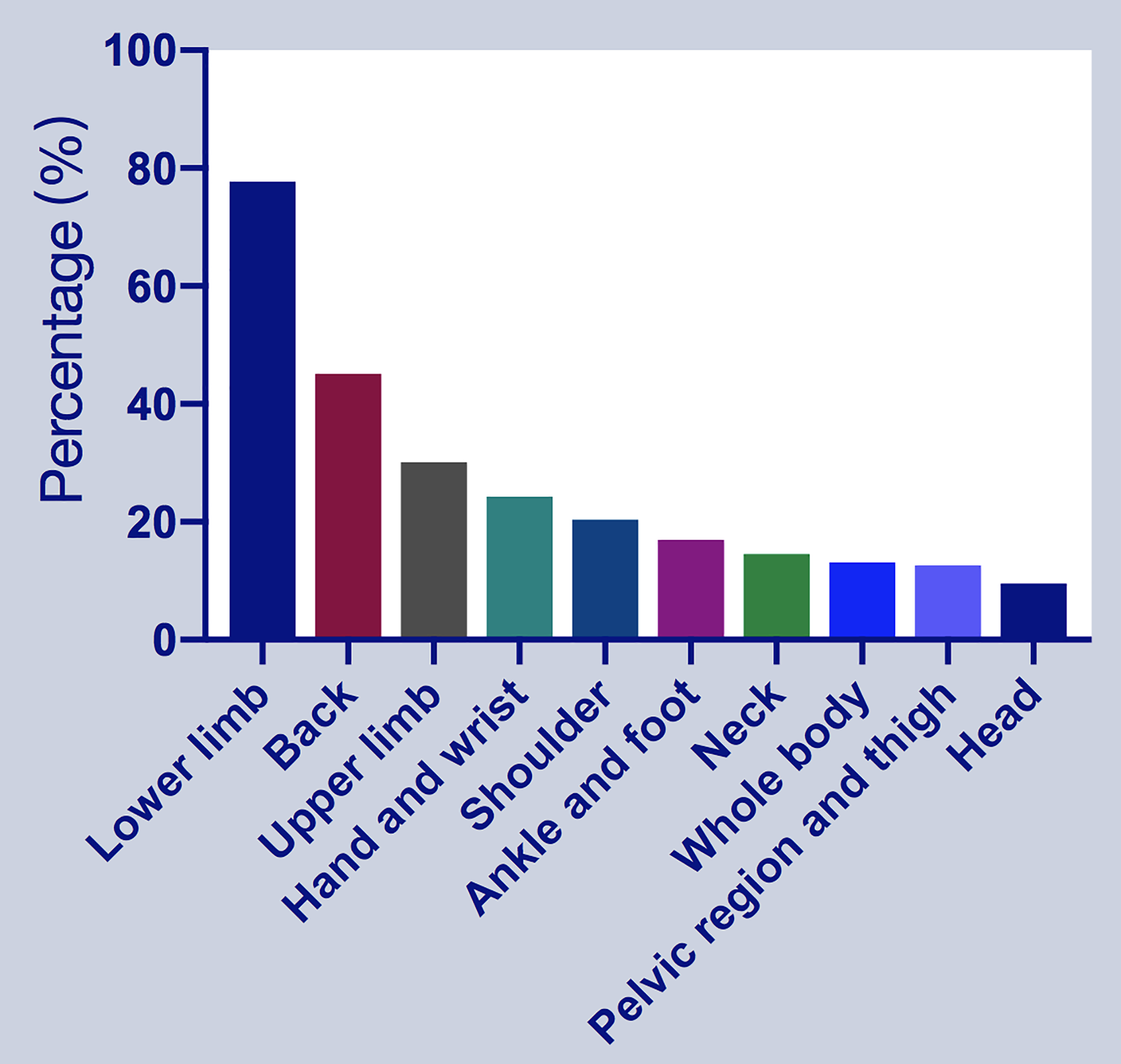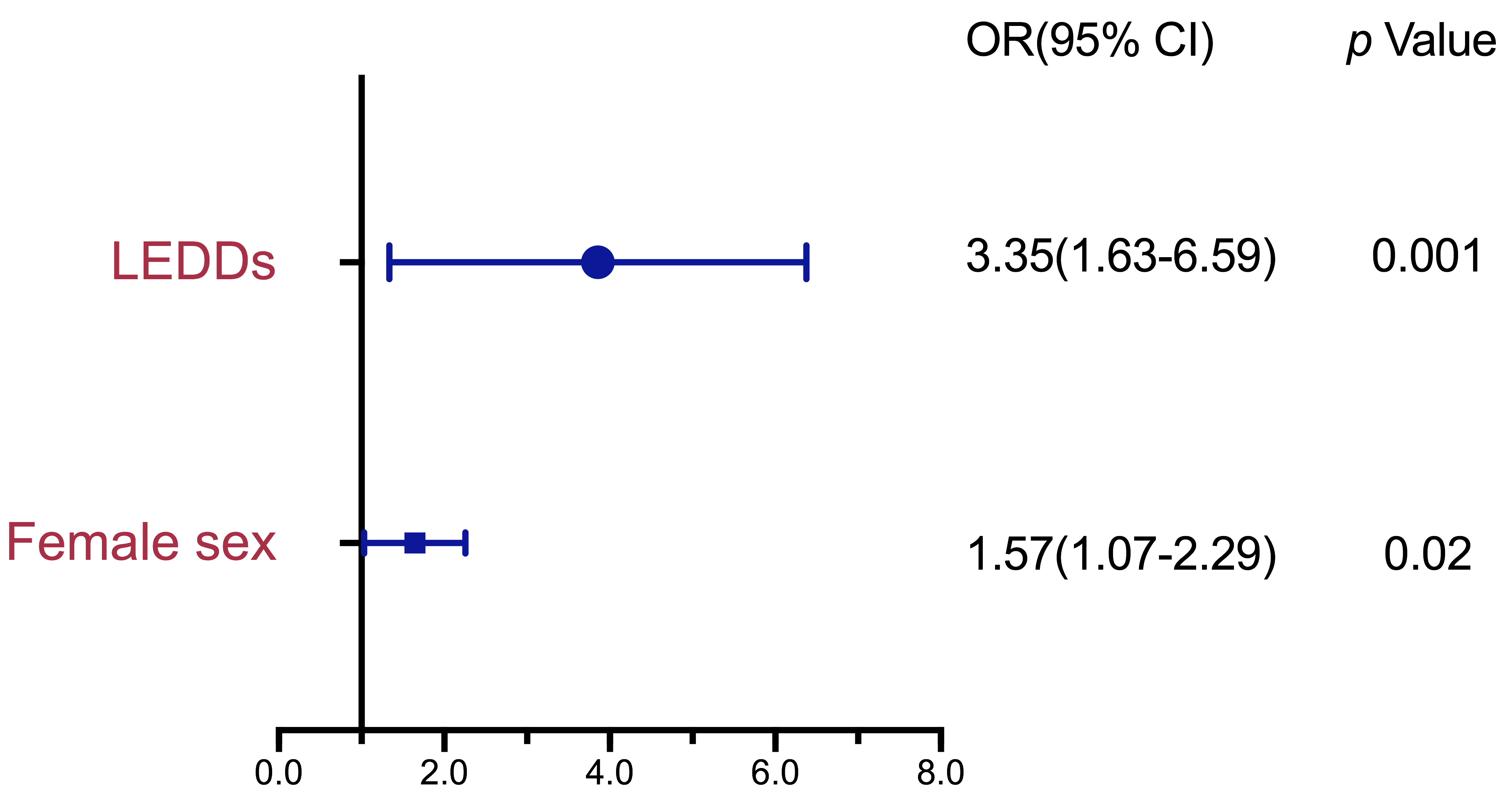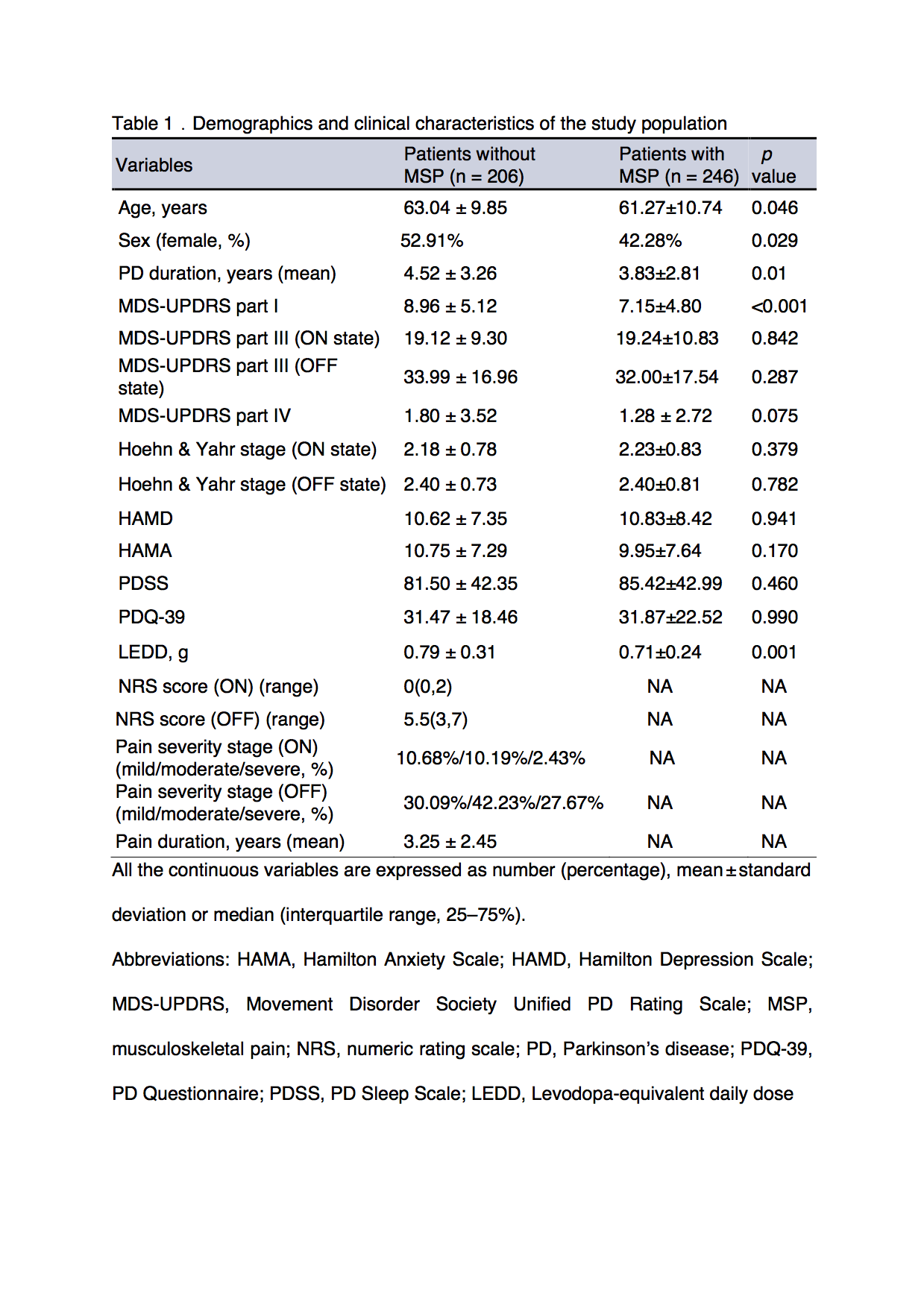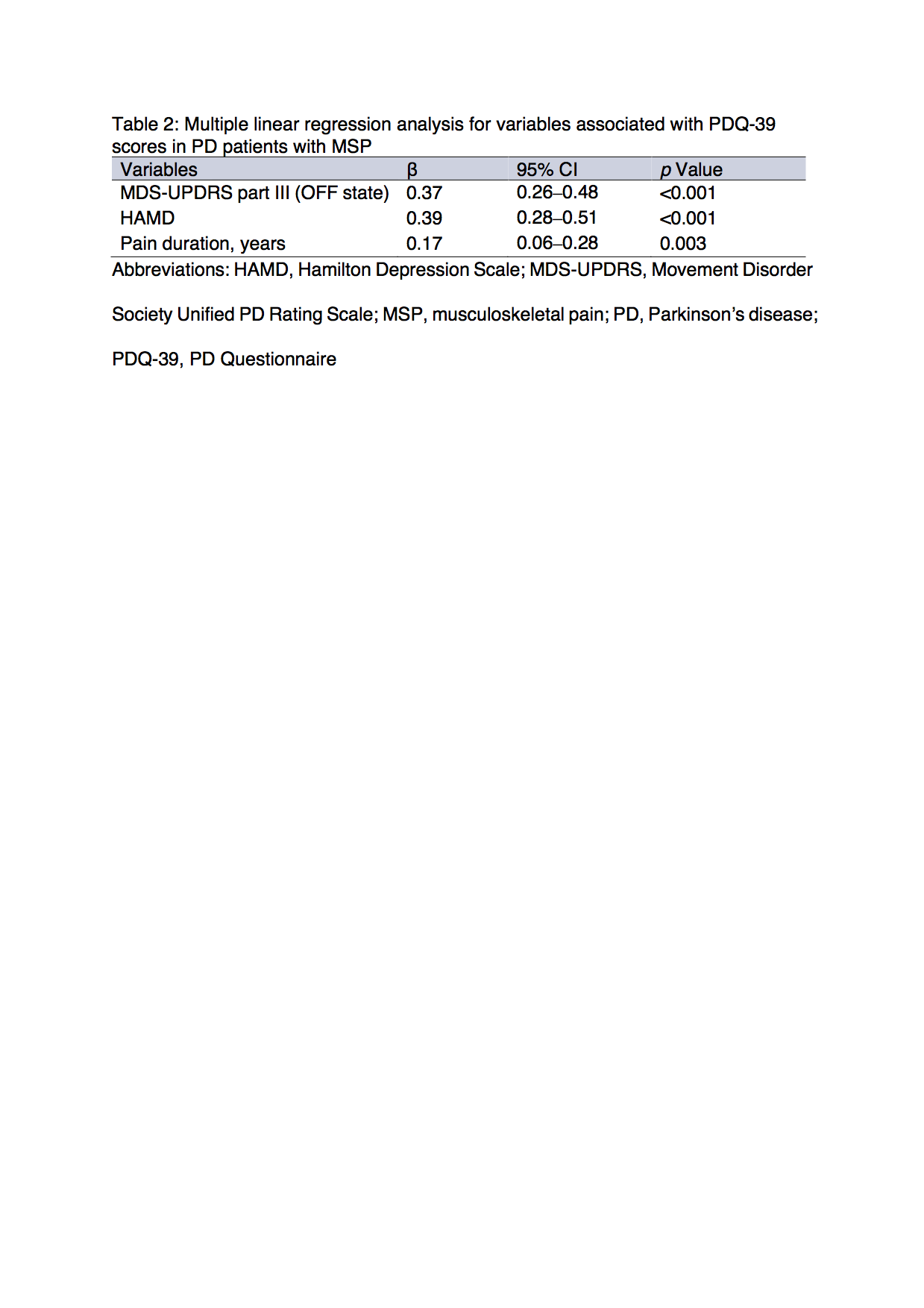Category: Parkinson's Disease: Non-Motor Symptoms
Objective:
To investigate the distribution, clinical characteristics, and factors associated with MSP in a large sample of patients with PD.
Background:
Musculoskeletal pain (MSP) is commonly experienced in patients with Parkinson’s disease (PD). Few studies have investigated the clinical characteristics and factors associated with MSP.
Method:
Total 452 patients with PD from two clinics were enrolled in the study. A standardized questionnaire was used to collect demographic and clinical information. Features of motor and non-motor symptoms, motor complications, and disease severity were obtained using validated PD scales. MSP was diagnosed based on the Ford Classification System and ICD codes and pain severity was defined with a numeric rating scale. The association between clinical features of PD and quality of life (QoL) and MSP was explored by multivariate regression models.
Results: Among the total 452 PD subjects, 206 patients (45.58%) reported MSP, typically in their lower limbs and backs. MSP was responsive to levodopa (i.e., pain intensity score reductions ≥30%) in 170 subjects with MSP. Female sex (OR, 1.57; 95% CI, 1.07–2.29) and levodopa-equivalent daily doses (OR, 3.35; 95% Cl, 1.63–6.59) were associated with an increased risk for MSP. QoL of participants was significantly impacted by MSP duration (p = 0.017), motor symptom severities as demonstrated by UPDRS part III (p < 0.001) and depression (p < 0.001).
Conclusion:
MSP is very common in PD, in particular lower limb and back pain. Up to 82.52% of MSP patients were responsive to levodopa. MSP is a determinant of QoL in patients with PD. Besides female sex, levodopa-equivalent daily doses are a determinant of MSP, which suggested dopamine deficiencies might be a determinant of MSP, instead of motor and non-motor impairment.
References: [1] American Academy of P, American Academy Of P. 2011 ICD-9-CM Coding Pocket Guide. Elk Grove Village, UNITED STATES: American Academy of Pediatrics, 2010. [2] Antonini A, Tinazzi M. Targeting pain in Parkinson’s disease. The Lancet Neurology 2015;14(12):1144-1145. [3] Beiske AG, Loge JH, Ronningen A, Svensson E. Pain in Parkinson’s disease: Prevalence and characteristics. Pain 2009;141(1-2):173-177. [4] Blanchet PJ, Brefel-Courbon C. Chronic pain and pain processing in Parkinson’s disease. Progress in Neuro-Psychopharmacology and Biological Psychiatry 2018;87:200-206. [5] Camacho-Conde JA, Campos-Arillo VM. The phenomenology of pain in Parkinson’s disease. The Korean journal of pain 2020;33(1):90-96. [6] Chen Y, Moutal A, Navratilova E, Kopruszinski C, Yue X, Ikegami M, Chow M, Kanazawa I, Bellampalli SS, Xie J, Patwardhan A, Rice K, Fields H, Akopian A, Neugebauer V, Dodick D, Khanna R, Porreca F. The prolactin receptor long isoform regulates nociceptor sensitization and opioid-induced hyperalgesia selectively in females. Science translational medicine 2020;12(529).
To cite this abstract in AMA style:
J. Li, B. Zhu, Z. Gu, H. Zhang, S. Liu, S. Mei, S. Ji, H. Chen, E. Xu, P. Chan. Clinical characteristics and factors associated musculoskeletal pain in Parkinson’s disease: A retrospective study from two centers in China [abstract]. Mov Disord. 2021; 36 (suppl 1). https://www.mdsabstracts.org/abstract/clinical-characteristics-and-factors-associated-musculoskeletal-pain-in-parkinsons-disease-a-retrospective-study-from-two-centers-in-china/. Accessed December 19, 2025.« Back to MDS Virtual Congress 2021
MDS Abstracts - https://www.mdsabstracts.org/abstract/clinical-characteristics-and-factors-associated-musculoskeletal-pain-in-parkinsons-disease-a-retrospective-study-from-two-centers-in-china/




